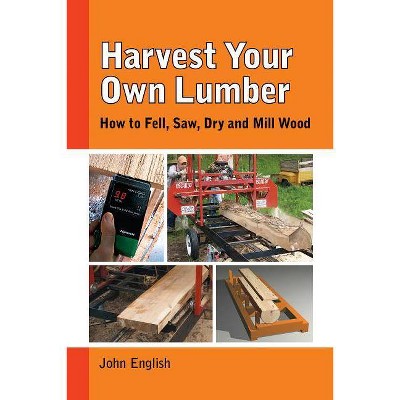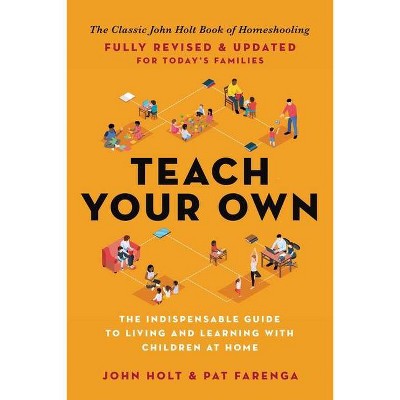Harvest Your Own Lumber - by John English (Paperback)

Similar Products
Products of same category from the store
AllProduct info
<p/><br></br><p><b> About the Book </b></p></br></br>A concise guide for the small shop or enthusiastic hobbyist, Harvest Your Own Lumber covers all of the important steps in the conversion of wood. John English takes the reader through selecting the raw material to the final drying of the harvested timber. All of the steps in between are explained in clear text accompanied with photographs and charts that make the process of milling your own lumber a guaranteed success.<p/><br></br><p><b> Book Synopsis </b></p></br></br>In today's artisan, hands-on, and environmentally conscience landscape, there are many reasons to mill your own lumber: a craftsman, artist, or builder can gain access to a new species and unique cuts of wood; there's the Yankee in all of us that hates to see a healthy log simply go off to the landfill when it can offer new flooring or a piece of furniture; and, finally, there's symmetry in building something for a grandchild from the branch that held his daddy's tire-swing. And, let's not forget that wood is expensive; on top of all the other great reasons, harvesting your own timber will save you a few bucks A concise guide for the small shop or enthusiastic hobbyist, Harvest Your Own Lumber covers all of the important steps in the conversion of wood. John English takes the reader through selecting the raw material to the final drying of the harvested timber. All of the steps in between are explained in clear text accompanied with photographs and charts that make the process of milling your own lumber a guaranteed success. The process of milling your own lumber is much more than just felling the tree and sawing it into useable boards. The first consideration is, of course, what type of tree will lend itself to producing good, useable timber. Once that decision has been made the sawyer must determine how to safely fell the tree and then how to convert the log into useable lumber. The author explains and illustrates the various choices available from what types of grain pattern to expect to the many defects to be aware of. Also included is an extensive chapter on chainsaws, safety, and felling. One of the most important aspects of timber harvesting is knowing how to "saw to grade". That is, how to get the best yield with the desired grain, from a specific log. Harvest Your Own Lumber provides the detail and instructions for sawing to grade as well as useful information on humidity and wood, kiln and air drying, various types of kilns and milling rough boards to get them flat and straight. This is a valuable handbook for any woodworker, builder, carpenter, or craftsman that relies on good quality wood.<p/><br></br><p><b> Review Quotes </b></p></br></br><br><b><i>Harvest Your Own Lumber</i></b> holds appeal for hobbyists, woodworkers, and crafters who would take better control of not just their landscapes, but their supply sources .... highly recommended for any home hobbyist who regularly uses wood and wants to take a more active role in its quality and availability. --<i>Recommended Reading-Donovan's Bookshelf</i><br><br>Impressively user friendly from first page to last, <b><i>Harvest Your Own Lumber</i></b> is an ideal and comprehensive instruction guide that will enable even the most novice woodworker to identify the best trees to harvest ... and convert it into usable logs. Very highly recommended for personal, community, and academic library woodworking instructional reference collections. --<i>Midwest Book Review</i><br><br>Well organized and written ... explains all the steps involved in lumber harvesting with clarity and a dash of humour. --Carl Duguay, <i>Canadian Woodworking & Home Improvement Magazine</i><br>
Price History
Cheapest price in the interval: 16.29 on October 22, 2021
Most expensive price in the interval: 16.29 on December 20, 2021
Price Archive shows prices from various stores, lets you see history and find the cheapest. There is no actual sale on the website. For all support, inquiry and suggestion messagescommunication@pricearchive.us




















